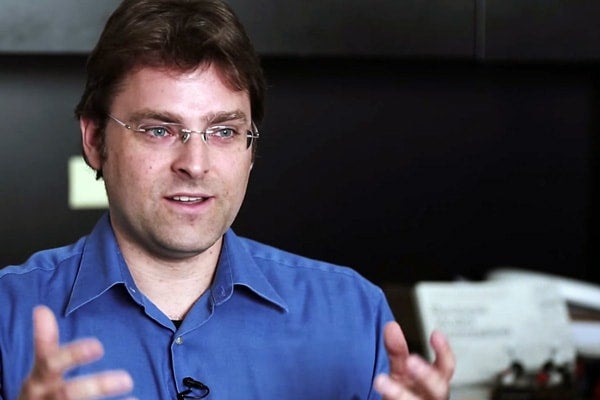
U of T team launches search for new Ebola treatments using artificial intelligence
Published: November 5, 2014
The University of Toronto, Chematria and IBM are combining forces in a quest to find new treatments for the Ebola virus.
Using a virtual research technology invented by Chematria, a startup housed at U of T’s Impact Centre, the team will use software that learns and thinks like a human chemist to search for new medicines. Running on Canada’s most powerful supercomputer, the effort will simulate and analyze the effectiveness of millions of hypothetical drugs in just a matter of weeks.
“What we are attempting would have been considered science fiction, until now,” says Abraham Heifets (PhD), a U of T graduate and the chief executive officer of Chematria. “We are going to explore the possible effectiveness of millions of drugs, something that used to take decades of physical research and tens of millions of dollars, in mere days with our technology.”
(Read the Mashable story about Chematria.) (See the CTV news story.)
Chematria has access to Canada’s fastest supercomputer, an IBM Blue Gene/Q, through the The Southern Ontario Smart Computing Innovation Platform or SOSCIP. The collaborative project involves 11 Ontario universities plus IBM Canada and pairs academic and industry researchers with high performance computing to analyze big data and fuel Canadian innovation.
Chematria is using the computer to support its virtual drug discovery platform which is based on the science of deep learning neural networks and has previously been used for research on malaria, multiple sclerosis, C. difficile, and leukemia.
Much like the software used to design airplanes and computer chips in simulation, this new system can predict the possible effectiveness of new medicines, without costly and time-consuming physical synthesis and testing. The system is driven by a virtual brain that teaches itself by “studying” millions of datapoints about how drugs have worked in the past. With this vast knowledge, the software can apply the patterns it has learned to predict the effectiveness of hypothetical drugs, and suggest surprising uses for existing drugs, transforming the way medicines are discovered.
The World Health Organization has projected that new cases of Ebola could reach 10,000 each week by December 2014, underscoring the urgent need for research to address the crisis. The unprecedented speed and scale of this investigation is enabled by the unique strengths of the three partners: Chematria is offering the core artificial intelligence technology that performs the drug research, U of T is contributing biological insights about Ebola that the system will use to search for new treatments and IBM is providing access to Canada’s fastest supercomputer, Blue Gene/Q.
“Our team is focusing on the mechanism Ebola uses to latch on to the cells it infects,” said Dr. Jeffrey Lee of the University of Toronto. “If we can interrupt that process with a new drug, it could prevent the virus from replicating, and potentially work against other viruses like Marburg and HIV that use the same mechanism.”
While there are “broad spectrum” antibiotics that can treat multiple kinds of bacterial infections, most antiviral medications are only effective against a single kind of virus.
The initiative may also demonstrate an alternative approach to high-speed medical research. While giving drugs to patients will always require thorough clinical testing, zeroing in on the best drug candidates can take years using today’s most common methods. Critics say this slow and prohibitively expensive process is one of the key reasons that finding treatments for rare and emerging diseases is difficult.
“If we can find promising drug candidates for Ebola using computers alone,” said Heifets, “it will be a milestone for how we develop cures.”
Michael Kennedy writes about health and wellness for U of T News.



